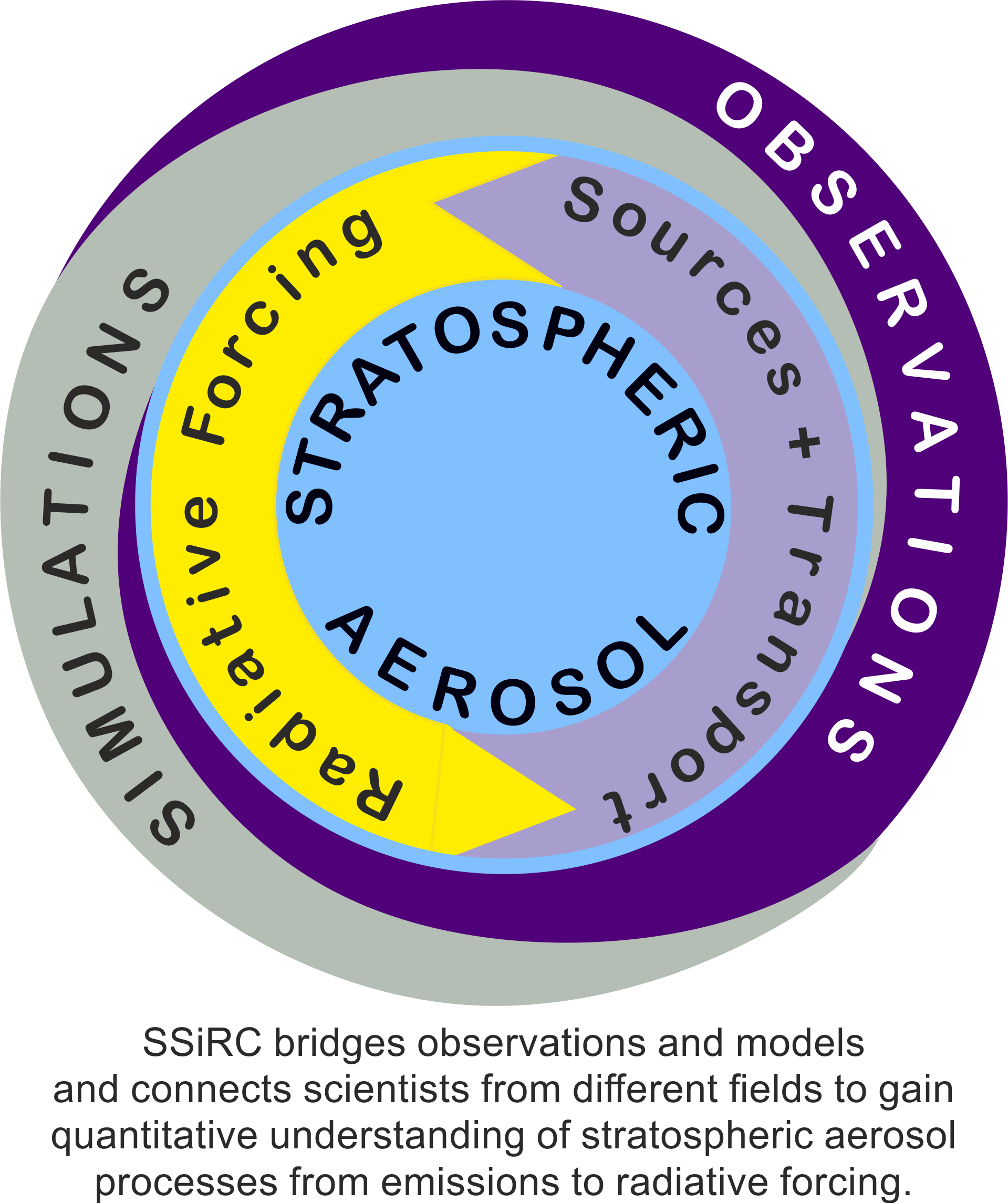

SSiRC is an established SPARC (Stratosphere-Troposphere Processes and their role in Climate) activity, with SPARC being a core project within the World Climate Research Program (WCRP). SSiRC aims to foster collaboration across observational and modelling groups to better understand the stratospheric aerosol layer and the drivers for its observed variations. The abrupt volcanic enhancements of the stratospheric aerosol concentrations cause strong solar dimming and thereby surface cooling with important changes in circulation and atmospheric composition in response. SSiRC key science questions link with several foci of the WCRP grand challenges. The stratospheric aerosol layer was discovered 60 years ago, but it still poses us riddles. Aerosol above 15 km forms an optically thin veil with a small well characterized impact on climate, but then, in explosive episodes, it can intensify dramatically due to massive, aperiodic volcanic eruptions. Following such events, the stratospheric aerosol influences Earth's climate by cooling the planet as a whole and creates potentially devastating changes to regional weather patterns, such as winter warming in the Northern Hemisphere and reducing summer monsoon rainfall over Africa and Asia. It also increases the probability of an El Niño in the following Northern Hemisphere winter. In the modern era, large volcanic events can temporarily slow the pace of anthropogenic global warming. While much is understood about the impact of stratospheric aerosol on climate, there are a number of open questions relevant to SSiRC, SPARC and the WCRP:
What is the uncertainty associated with estimates of aerosol properties such as aerosol optical depth over the satellite era, and what are the uncertainties at scales from the 1991 Pinatubo eruption to background levels?
What is the contribution from non-sulfate components and how important is the contribution?
How do anthropogenic emissions stratospheric aerosol precursors affect stratospheric aerosol variability?
How does the tropospheric sulfur cycle respond to climate change, and how does it affect stratospheric aerosol levels?
How does variability in stratospheric aerosol affect surface temperature and precipitation?
How does co-emitted ultra-fine ash influence the volcanic SO2 radiative forcing from major volcanic eruptions?
What are the major uncertainties in calculating stratospheric aerosol radiative forcing?
By addressing these questions, SSiRC aims at better constraining the pathways of stratospheric aerosol and its precursors from emission to radiative forcing. By raising these questions and highlighting their importance, SSiRC stimulates research in this area, research that is relevant to WCRP's mission. SSiRC enables the assessment of our understanding the role of stratospheric aerosol in climate including the potential for catastrophic climate impacts following a major volcanic event, and decoupling more moderate climate changes in the stratospheric aerosol burden from those attributable to human activities. SSiRC builds a community from different fields of study and fosters collaboration. SSiRC connects to other WCRP/SPARC activities including ACAM, OCTV-UTLS and CCMI.
SSiRC is currently supporting a number of endeavors, such as:
SSiRC is linked to: